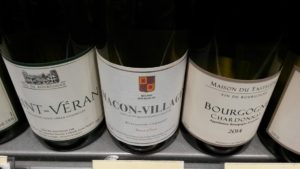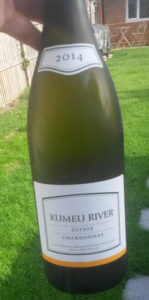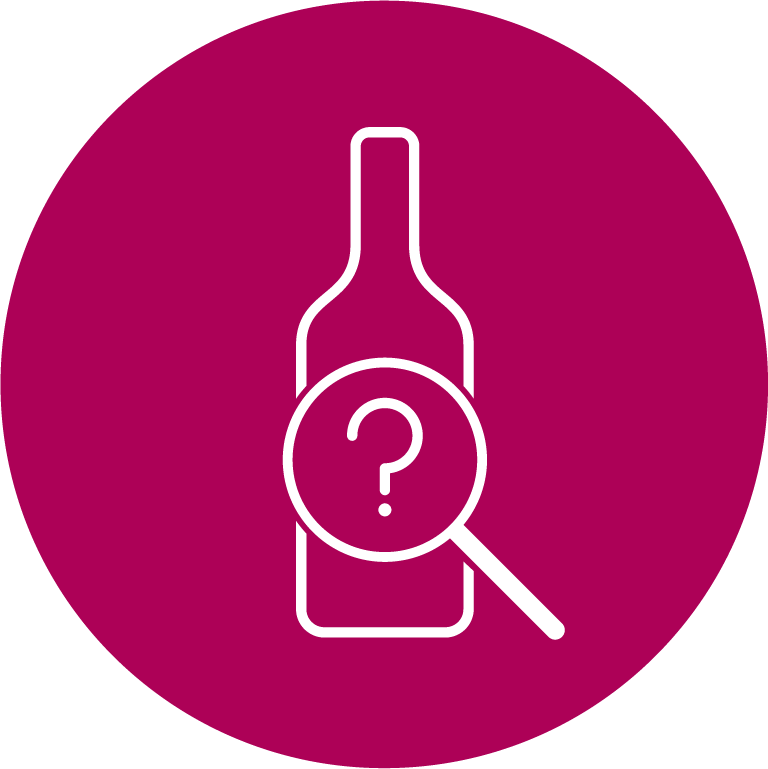Ok, I probably ought to point out first up that I used to be a fully paid up member of the ‘ABC’ (Anything but Chardonnay) Club.
Why? Chardonnay (particularly New World Chardonnay) had by the 1990’s become a victim of its own success: the fashion being for rich, ripe and over-oaked wines and perhaps unfortunately for me, this was the era of my first exposure to the ‘wonders’ of chardonnay and I shall use the term loosely in these early days of my wine drinking experiences. I couldn’t really afford good Burgundy then (still can’t!) and the big brands coming out of Australia were good value albeit mostly overly oaked and the result was fatty, almost chewy wines, deep gold in colour and smelling and tasting of almost nothing but the confected artificial flavours of butter and vanilla.
Some of these wines never saw the inside of an oak barrel but rather had buckets of oak chips chucked into the vat…the result….unintegrated, uninteresting and (almost to me at least) unpalatable wines. Fortunately the trend has reversed and these days leaner, more restrained, less oaked wines are in vogue so, rant over, whilst it’s taken me a good few years of therapy, I can confirm I now actually quite like Chardonnay!
Compared to Sauvignon Blanc, Chardonnay is the elegant, rather shy sister – the grape is more of a blank canvas and has less overt flavour characteristics, this coupled with its high natural acidity lends itself readily to sparkling wines and indeed Chardonnay is one of the three authorised grapes of Champagne.
So what does Chardonnay taste of? Well it rather depends on where it’s grown as in warmer climates it has a tendency to over-ripeness and takes on tropical fruit (Melon, peach, papaya, pineapple) characteristics, however in cooler climates, the grape exhibits lovely lemony, apple and white flower notes.
Chardonnay has a natural affinity to oak and when the grape is oaked, it takes on a richer style with buttery, vanilla, toasty notes which vary in intensity depending on how much time the wine has spent in oak and whether new or old oak barrels were used. There are way too many other variables I could go into here that will impact on the aromatic and structural profile of the wine ie size of barrel, type of oak, whether oak is used for ageing or during fermentation or both, whether it’s undergone MLF or had lees stirring…but to keep it simple let’s just say older oak barrels impart less oak character than would be the case with a new oak barrel.
It should be said however, that Chardonnay by no means has to be oaked – indeed Chablis (particularly the entry level wines) are unoaked and the result is a steelier more minerally, flinty wine with green apple and lemon notes so this will be more your bag if you like leaner wines.
Key Regions
All self-respecting wine nations make Chardonnay, it is a hardy grape which grows well in lots of climates, but some of its best expressions are found in:
France – Key areas to look for are Burgundy, Chablis and Champagne (for Sparkling). The white wines of Burgundy on the Cote D’Or will almost always be Chardonnay but this is where it gets confusing, given France’s propensity to label by appellation and I should also say the prices vary hugely from the entry level Bourgogne wines up to the Premier and Grand Cru’s. Examples of a range of quality wines include: Chablis, Montrachet, Meursault, Musigny, Pouilly-Fuissé (not to be confused with Pouilly-Fumé which is in the Loire and is Sauvignon Blanc!), for more affordable wines, look for the Mâconnais ie Saint-Véran or wines with Macon or Macon Villages on the label.

Note – Keep an eye out for an upcoming ‘In a Nutshell’ blog giving a simple overview of the Appellation system in Burgundy which should help…a bit.
United States – this is a key variety in the US and came to international prominence after the 1976 Judgement of Paris, when a Napa Chardonnay from Chateau Montelena beat its Burgundian rivals to the top prize! The range of styles is very varied as is the pricing and the wines are never shy (alcohol often around 13.5-14%) note also that some cheaper wines may have some residual sugar which may or may not be to your taste. Key regions include: Napa , Sonoma, Washington and Santa Barbara. Costs are often quite high for the quality wines from this market but they can be exceptional. I very much enjoyed the Mitsuko Vineyard from Clos Pegase in Napa (for any US readers).
Australia – fashion has played its part here more than arguably anywhere else in the world, whilst oaked wines are still made, for fans of more restrained oak or unoaked Chardonnay, this is a good place to look. Margaret River, Tasmania and Adelaide Hills are worth checking out.

New Zealand – Kiwi wines are generally always naturally high in acidity which give structure and poise to their Chardonnay and the grape is grown all over both islands. Hawkes Bay, Marlborough and Central Otago make fine examples. Greywacke is a favourite of mine as is Kumeu River.
Chile – as was the case with Sauvignon Blanc, Chile’s cooler coastal regions are best for Chardonnay (think Limari, Elqui, Casablanca and San Antonio), and prices are generally very good. Errazuriz is a big producer worth checking out for quality wines at good prices as is Cono Sur, although I prefer their single vineyard wine to the entry level ‘Bicycleta’ range but they are more expensive and harder to find.

Thanks Sam great article!
Hi Sam, have you ever tried French Cotes du Jura Chardonnay? It is very different from others with it’s rather honeyed, nutty taste but works really well with the local Comte cheese and other nutty cheeses such as Gruyere and Emmental. Lidl who currently have an excellent selection of French wines you don’t often see outside the country have one in their current range, Domaine G Quillot £ 8.99.
Hi Maria, thanks for the comment and suggestion. Jura wines generally are quite original in style and you’re right we don’t see too many of them in the UK market. I havent tasted the one you have noted, but I will take a trip to LIDL and see if it’s still there and give it a go!
There is also an excellent fizz from the Jura, Cremant du Jura made from 100% Chardonnay and sold at Aldi £7.99. It appears on all the suggestions for Xmas nearer the time but does have a tendency to sell out if you leave it too late. I realise this comment kind of crosses over onto your sparkling blog too…
Absolutely, I’m a big fan of Cremant, real value for money versus Champagne.
And Prosecco with its one teaspoonful of sugar per glass ! I am not a fan obviously….despite my name !